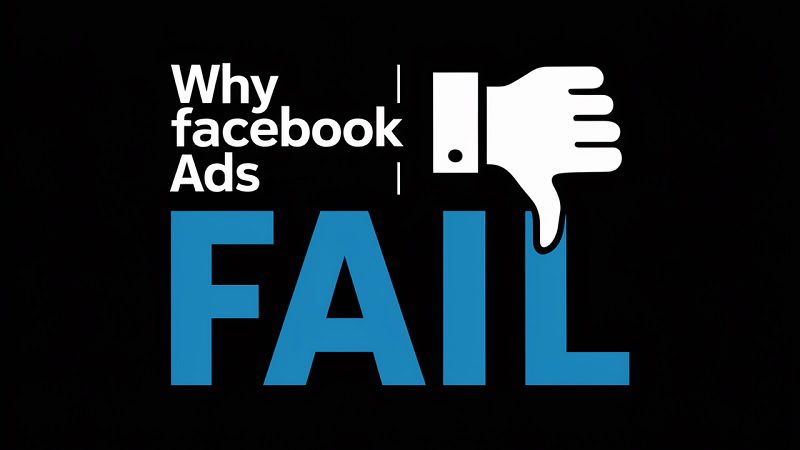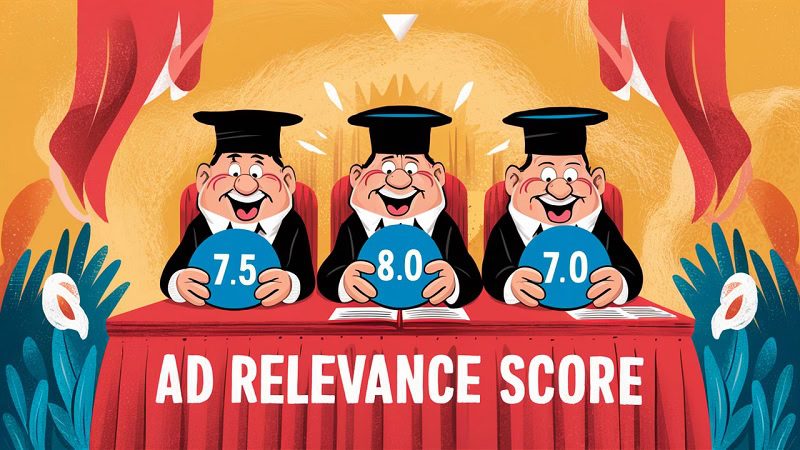Paid Search advertising can work wonders for your e-commerce business.
With the right strategy, you can instantly tap into consumer demand and capitalise on real-time searches, placing your brand in pole position.
Plus, when it comes to delivering results, the possibilities are almost endless.
Paid Search can help to sky-rocket your site traffic, drive up your conversion volumes and bolster your brand awareness.

Boost E-Commerce ROI: Download Our Free CPA & ROAS Calculator
But the world of Paid Search advertising moves at lightspeed, and small adjustments can have an enormous impact on your chances of success.
Making the right optimisations is key to maintaining positive results and staying ahead of the competition.
That begs the question – how can you ensure that you’re making the correct optimisations at the right time? What’s the formula for Paid Search success?
Well, you’re one step closer already, because reading this article is a great start.
We’ve compiled 6 strategies that will fuel exceptional performance for your Paid Search campaigns and help you to crush your targets. Let’s get going.
As a specialist Paid socials agency we can help you with your campaigns just get in touch for a free consultation.

What are the benefits of optimising Paid Search campaigns?
What’s so important about optimising your Paid Search campaigns?
Why are these tweaks and adjustments such a big deal?
Well, the search market is incredibly competitive and fast-paced. You need to stay ahead of the curve.
Take keywords for example. If you neglect keyword optimisations, you could be wasting your money on ineffective bids or missing out on new revenue opportunities.
Not good.
Or maybe a new competitor is moving into your territory with an aggressive bidding strategy. If you don’t react quickly, you could lose both precious business and your hard-earned position in the search rankings.
Disaster.
Investing time into Paid Search optimisation helps to keep your campaigns running smoothly and your budget working efficiently.
So what are the best ways to keep your campaigns at peak performance?

Expert strategies for Paid Search success
1. Refine your keyword strategy
Your keyword strategy is the lifeblood of your Paid Search campaigns, so you need to make sure that you’ve got your tactics nailed down.
The first step is to identify any low-performing keywords.
Weaker keywords will usually be delivering lower volumes of impressions, clicks, or conversions.
They might also be seeing mixed results. For instance, high volumes of clicks but zero conversions. These are red flags, but there could be a chance to tweak your approach to improve performance.
You might think about the search intent behind certain keywords and adjust your ad copy accordingly.
For example, let’s say you’re bidding on keywords that indicate someone is just starting to research products in your category – but your ad copy is heavily focused on driving immediate sales.
You’re seeing high impressions, but low conversions, because you’re not tailoring your messaging to the search intent.
In this case, you could tweak your ad copy to focus more on your product benefits and less on pushing sales. This messaging would be more persuasive for somebody in the research stage and could improve your conversion rate.
However, sometimes you’ll just need to pause ineffective keywords and focus on more profitable options.
You won’t always be able to improve keyword performance with tweaks to your ad.
To take things a step further, you can begin to add negative keywords into the mix.
Choosing tactical negative keywords helps to refine your strategy, preventing your ads from appearing around these specific searches.
Dive into your keyword data to identify some keywords that might be irrelevant to your brand and driving low-quality traffic to your site.
You can decide how aggressively you’d like to utilise negative keywords (e.g. blocking exact matches or wider phrases) but this can be a great way to avoid reaching searchers who aren’t interested in your products.
2. Take control with manual bidding
If you’re running long-term Paid Search campaigns, then taking the plunge and using a manual bidding strategy can be a brilliant move.
Many advertisers may be tempted with automated bidding strategies, which is understandable – automated bidding is more convenient and less time-consuming.
But for those willing to invest more time and energy into their campaigns, manual bidding can deliver a plethora of benefits.
The key word here is control. Manual bidding allows you to make granular optimisations to your campaigns which can result in big leaps in performance.
For example, manual bidding allows you to bid at the keyword level, enabling you to pursue specific words or phrases that might prove to be profitable. Automated bidding doesn’t permit this level of granular bidding.
Manual bidding also allows you to make instant and decisive changes to your strategy. Trying to make changes to automated bidding, on the other hand, can be frustratingly time-consuming.
This is particularly important in the world of search because the market moves rapidly. You may need to react quickly to industry news or adjust budgets based on a sudden spike in performance.
Manual bidding provides you with the tools to stay agile.
However, it is important to note that manual bidding requires constant campaign monitoring and sufficient resources to make speedy adjustments.
If your campaigns are rapidly growing in scale and you don’t have dedicated support, you might find that the manual approach is too taxing. But if you can find a way to make manual bidding work, you’ll find yourself with an advantage over any automated competitors.
3. Experiment with ad copy

Sharpening your keyword and bidding strategies is fundamental to Paid Search success.
But what you’re saying in your ads is just as important as the buying tactics behind them.
We’ve already pulled together some helpful copywriting strategies that can transform your search ads into conversion machines – but here are some of the key points to remember.
- Focus on the customer pain points – try to mirror customer search queries and clarify how your brand can solve their problem.
- Use specifics in your copy – calling out specific numbers (i.e. revenue generated, campaigns delivered, etc) helps to build credibility and persuade prospects.
- Utilise relevant keywords – sprinkle relevant keywords into your copy and experiment with their position to optimise performance.
- Include a strong Call To Action – keep your CTA simple and clear to drive action, and make sure that your landing page enables a smooth user journey.
- Make the most of promotions – be sure to showcase any offers or special discounts in your ad copy, because this can set you apart from the competition.
- Use power words – words like ‘exclusive’ and ‘opportunity’ create instant appeal and can make your ads much more compelling.
Constantly experimenting with your Paid Search ad copy is an important part of the optimisation process. Small details like keyword placement can seriously impact your results.
Try to regularly run different variations of your ads, and take note of how they perform. You can then use this data to fuel your copywriting and improve performance.
4. Tidy up your account structure
Sometimes you just need to get things organised – and this is particularly true for your Paid Search account structure. It’s easy for your ad accounts to become cluttered and disorganised over time, so make sure that you’re keeping things tidy.
An organised account helps to streamline your campaign management and keep your activity running efficiently.
Think about how your account is currently organised. As a reminder, the below is the standard structure for platforms like Google Ads:
- Ad Account
- Campaigns
- Ad Groups
- Ads
- Keywords
- Ads
- Ad Groups
- Campaigns
Ensure that you don’t overload campaigns with too many ad groups or keywords.
If you can create multiple distinctive campaigns (based on different themes or individual products) then it’s infinitely easier to organise your ad groups.
Although this might seem like a bit of a pain, it’ll make campaign management a breeze in the long term, which helps you to stay focused on the important things. Trust us.
Analyse your structure regularly to ensure that everything stays organised.
5. Stay focused on your goals
Paid Search allows you access to measurable results and real-time performance insights, which is a big help when it comes to optimisation. You just need to stay laser-focused on your objectives.
Keep a close eye on your reporting numbers when you’re managing search campaigns, and make sure that your optimisations are based on what the data is telling you.
Firstly, you need to kick off every campaign with a crystal clear objective. What do you ultimately want Paid Search to contribute to your business?
From here you can figure out the individual metrics that ladder up to this larger goal.
For example, if you’re launching a new brand and aiming to raise brand awareness, you might be more interested in the volume of impressions being delivered to your audience.
However, if you’re trying to smash a revenue or sales target, you’re more likely to focus on website purchases and conversions.
Establish these key metrics early and then optimise accordingly once your campaign is live. Which keywords or audiences are delivering the best results based on this objective?
It’s also vital to have the correct tracking in place for your campaigns, so you can assess results quickly and rely on accurate reporting.
You can track a number of different actions, from website sales to app installs, so it’s just a matter of picking the right metrics.
6. Set up the correct landing pages
When ironing out your Paid Search strategy, it’s crucial to think about the complete user journey.
Where are users going to end up if they click your search ad? Does the landing page connect to your keyword targeting and ad messaging?
A disjointed or inconvenient user journey can easily mean a lost conversion and even a negative perception of your brand.
However, an intuitive user journey can have the opposite effect, enabling smoother conversions and a positive experience. Much better.
As an example, let’s say you run a business selling gym gear.
You’re bidding against specific keywords (e.g. workout vests) but when prospects click, they’re taken to a generic home page and forced to navigate the product catalogue themselves.
You might see a decent number of impressions and clicks, but your conversions are likely to suffer due to a frustrating user journey.
Instead, you should set up dedicated landing pages for individual Paid Search ads and products. Think about the information a user is expecting to receive when they click your ad, and ensure that your landing page delivers it.

Are there any useful Paid Search tools available?
Utilising the right Paid Search tools can give you a vital edge over your competition.
Let’s run through some of the most effective tools to include in your search arsenal.
1. Semrush
Semrush is an all-in-one digital marketing platform, with some powerful tools focused specifically on Paid Search campaigns. It’s great for established businesses that can take advantage of an expansive range of advanced features.
The tool allows you to conduct in-depth analyses on the market, meaning you can discover valuable keywords for your campaigns, identify new competitors and review the performance of hundreds of keywords simultaneously.
It also offers some handy tools for content marketing and SEO optimisation, so if you’re looking for support beyond Paid Search, this is a good option.
2. Optmyzr
If you’re looking to add some automation to your optimisation, then Optmyzr could be the tool for you.
The tool makes Paid Search account management much smoother, allowing you to adjust keyword strategies, optimise bids and A/B test ad copy in a few simple clicks.
This helps you to increase the efficiency of your campaigns by quickly focusing on the tactics and ads that are driving the best results.
3. SpyFu
SpyFu allows you to conduct a thorough analysis of your competition, helping you to identify their most valuable keywords, review their ad spend and learn from their most successful (and unsuccessful) strategies.
You can also download some customised Google Ads templates from SpyFu that have been tested across several different industries – this is great for getting your account up and running quickly.
How do I track my Paid Search results?
It’s vitally important that you closely monitor the performance of your search campaigns.
Fortunately, reviewing campaign data is fairly simple.
You’ll first need to make sure that you have everything you need to track the right metrics – for example, website or app conversion tracking. Here’s a handy guide from Google that can steer you in the right direction.
Once you’ve got your tracking set up, you’ll then just need to get your head around the metrics available to you. Some of the core metrics to track are:
- Impressions
- Clicks
- CTR
- CPC
- Conversions
- Conversion rate
- Quality score
You can also customise the columns in these reports to focus on the metrics most relevant to your campaigns.
It’s also wise to link your Google Ads and Analytics accounts.
Once these are connected, you’ll be able to dive deeper into your Paid Search performance – including both ad metrics (impressions, clicks, etc) and how users then engage with your website (bounce rates, purchases, etc).
Useful guides & further reading
Still thirsty for some Paid Search knowledge? We’re impressed.
Check out these links for some further reading and practical info on search campaign management:
If you’re looking to improve your Paid Search ad performance, following these strategies is a great place to start.
It might take some time to refine your approach, but be patient – the results will come!
The world of Paid Search moves at lightspeed, so just stay focused on your goals and make sure you pay close attention to the numbers. You’ve got this.







